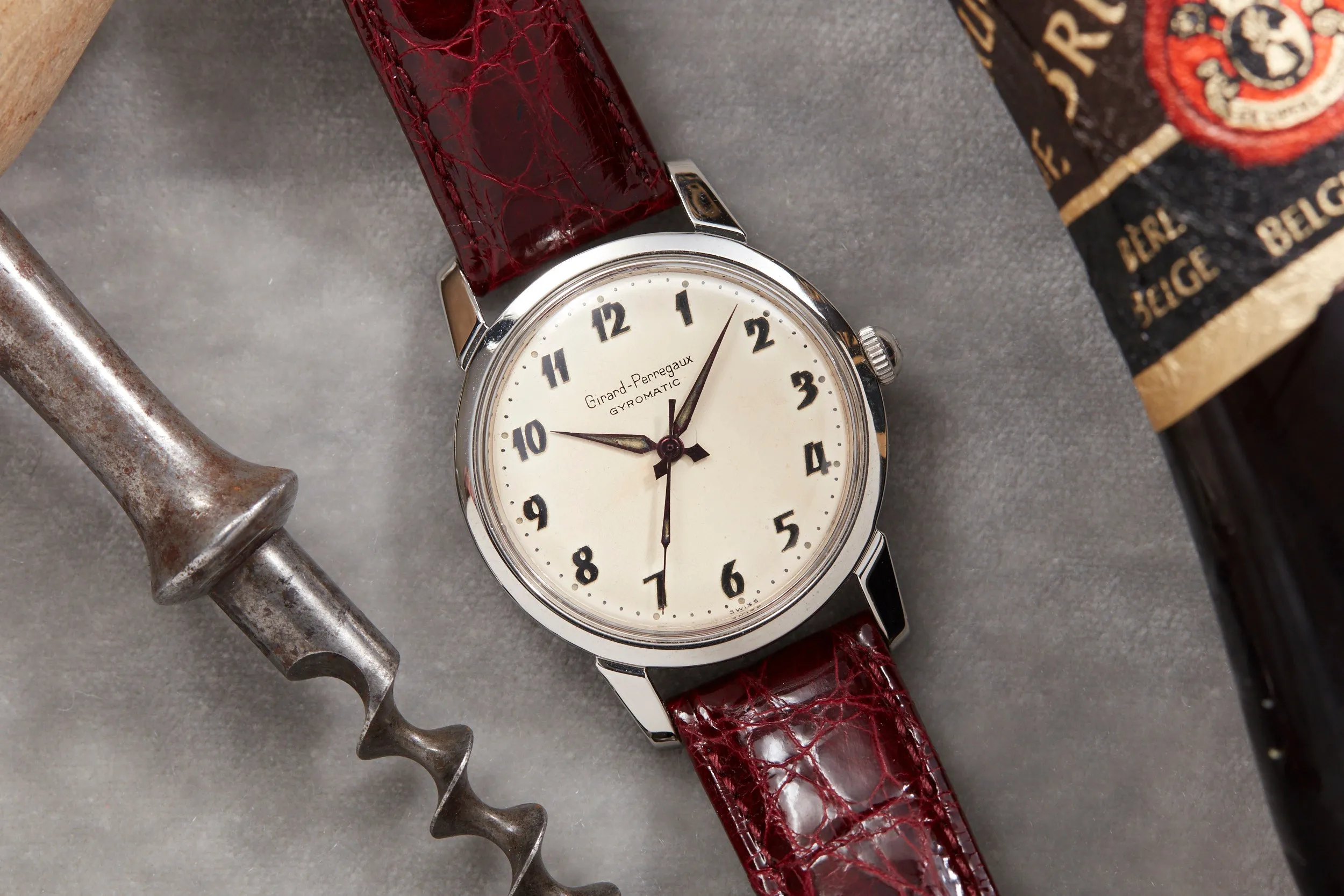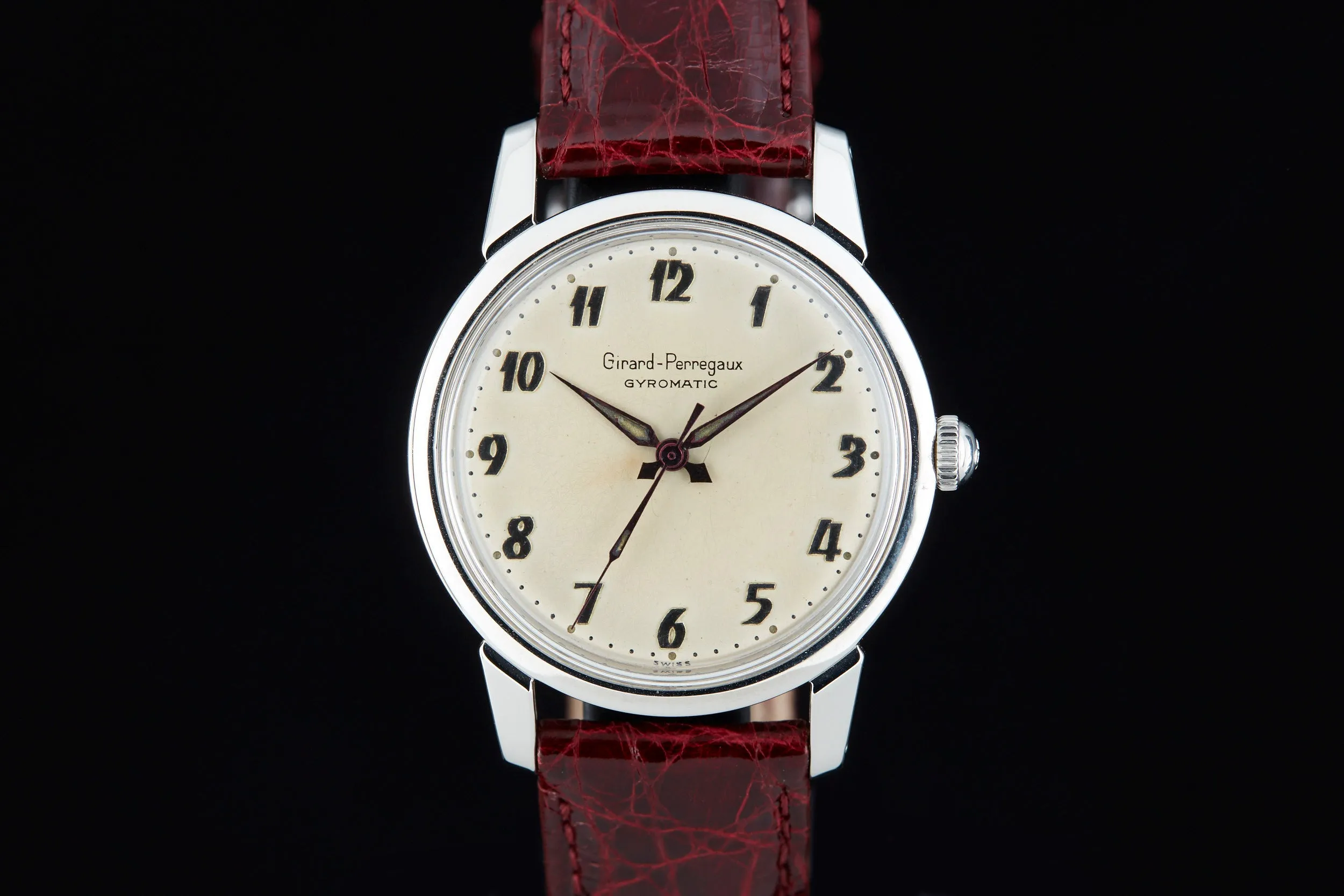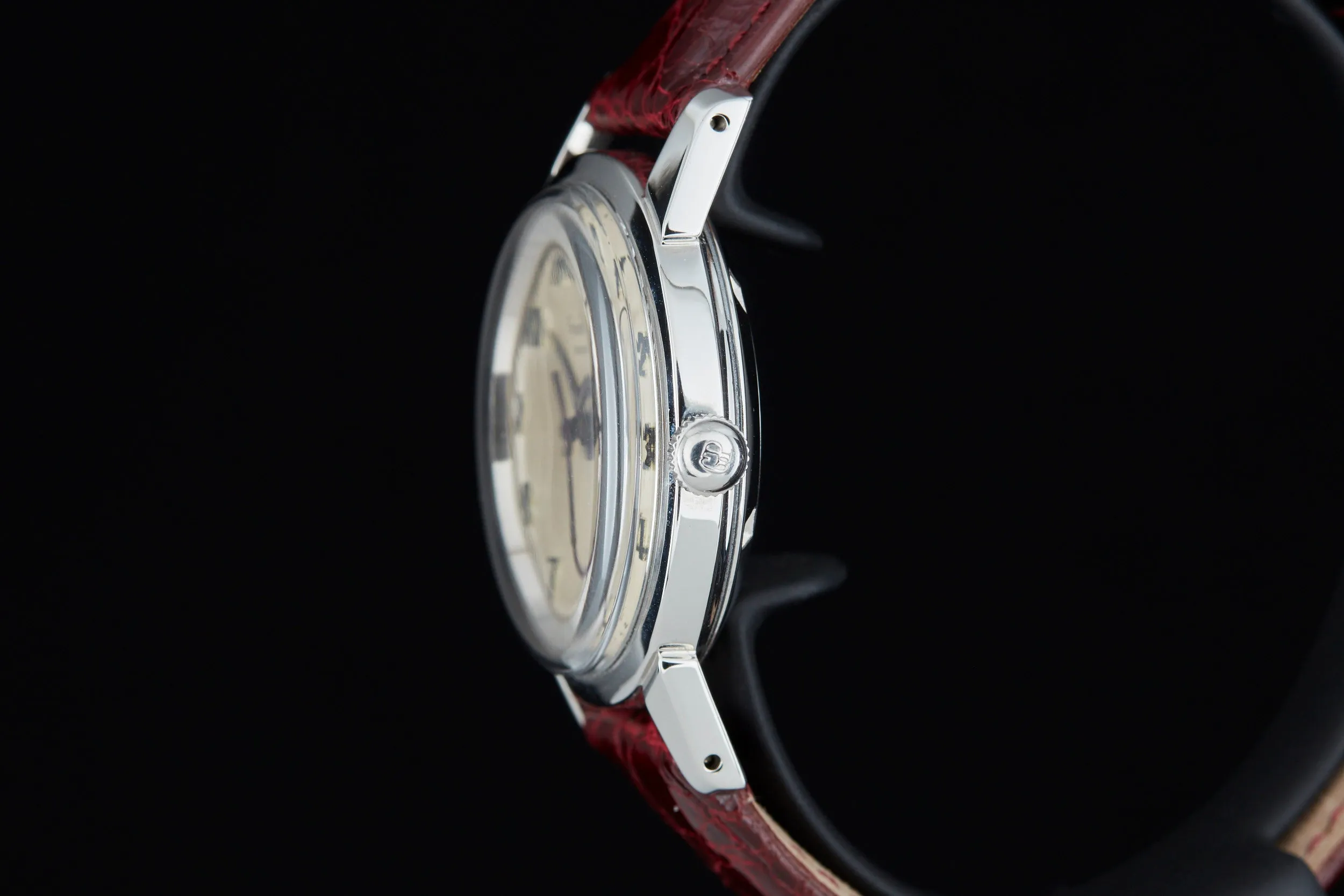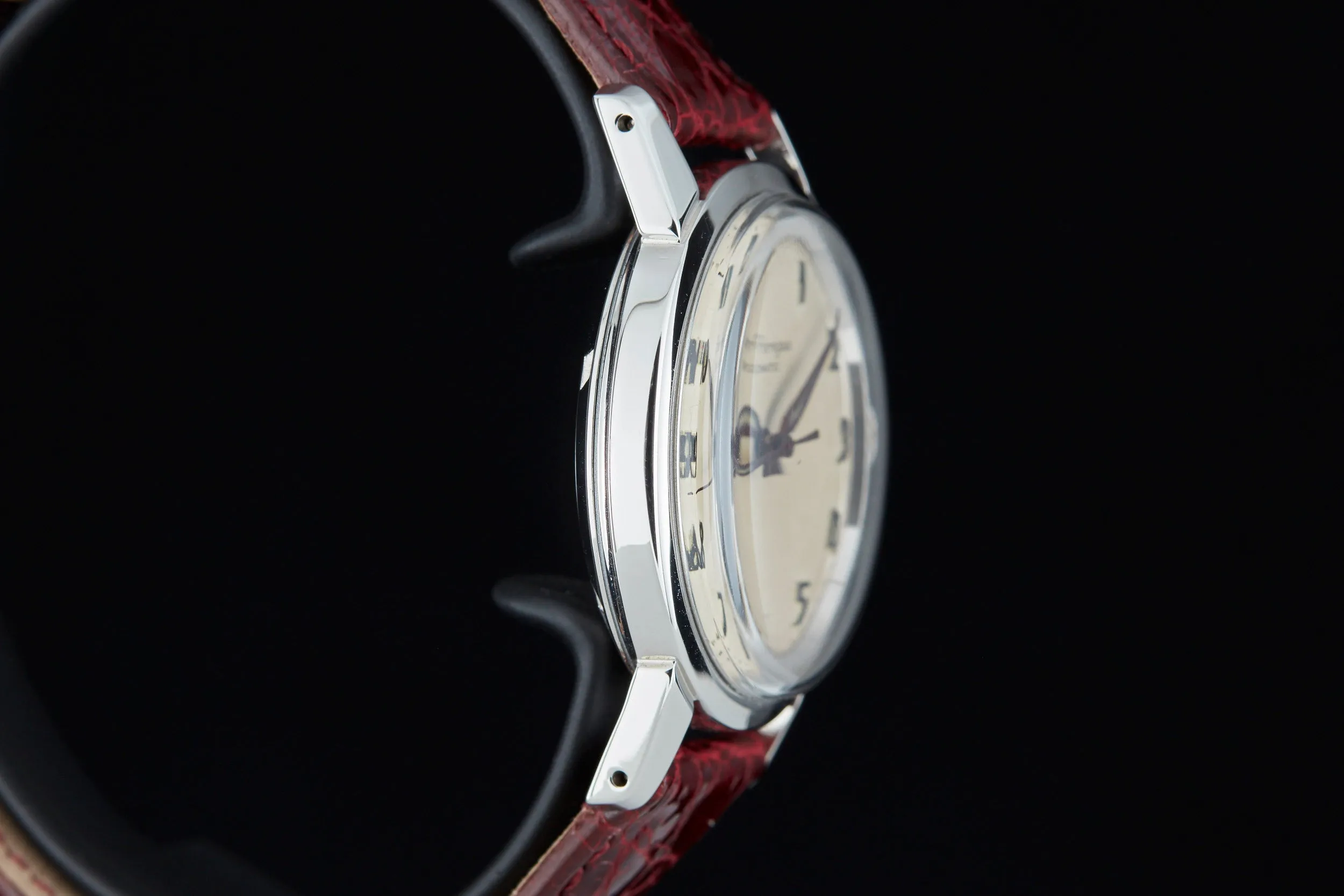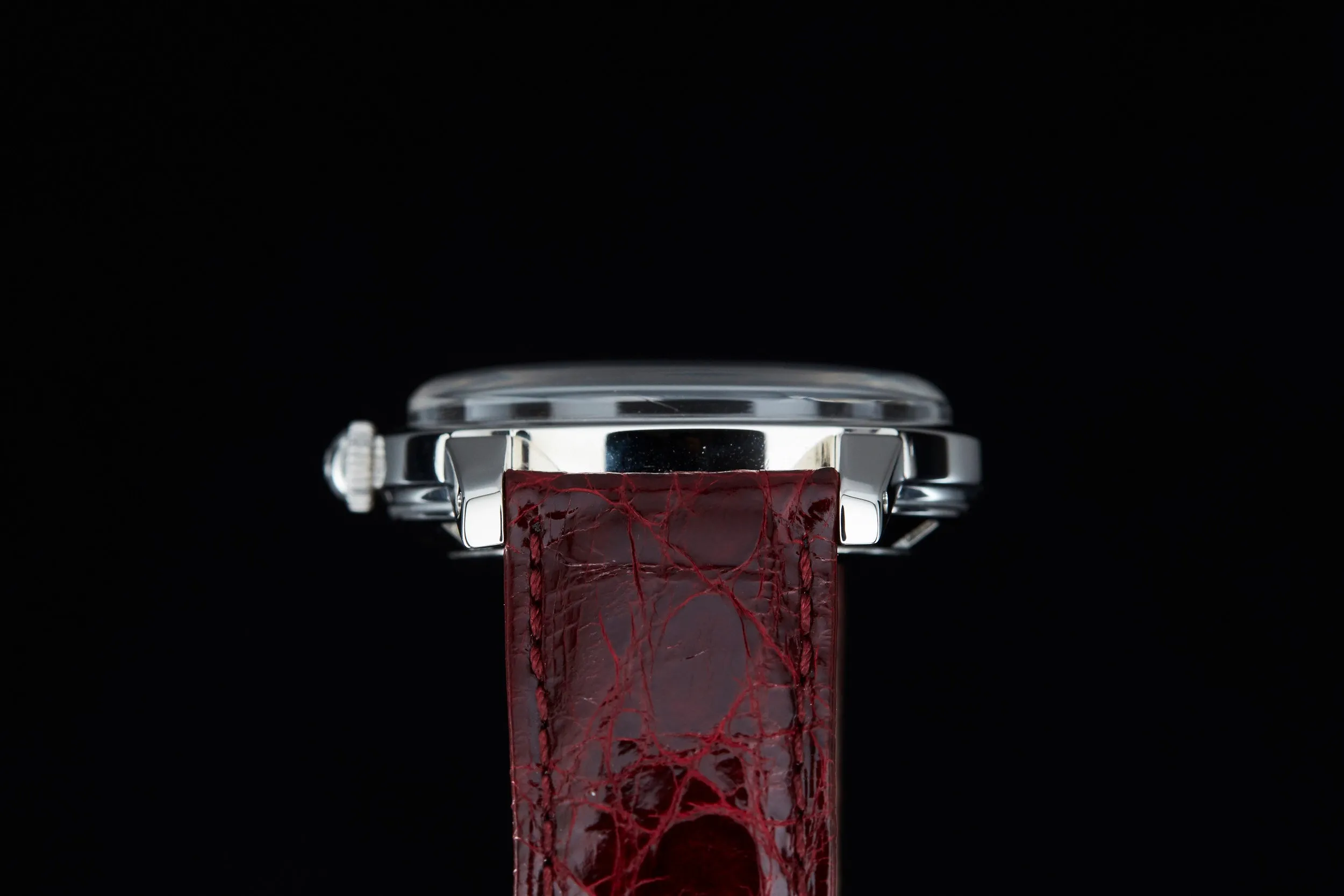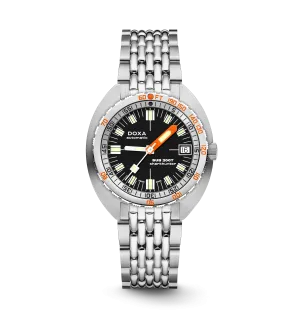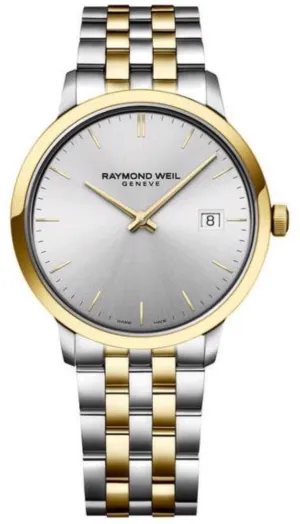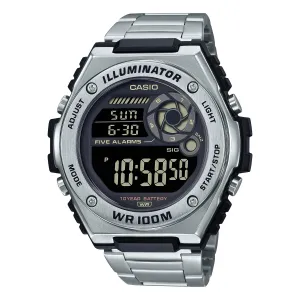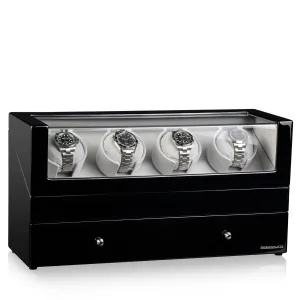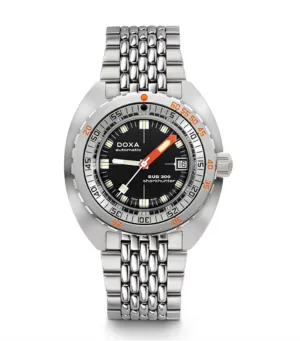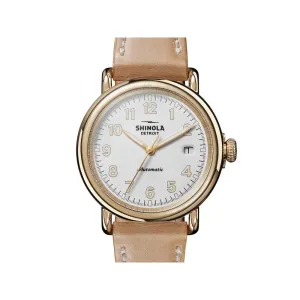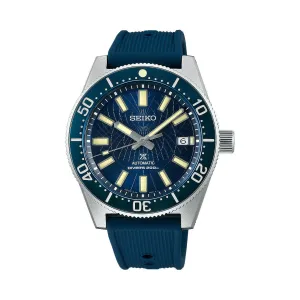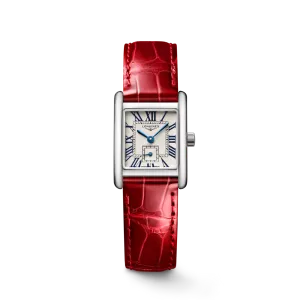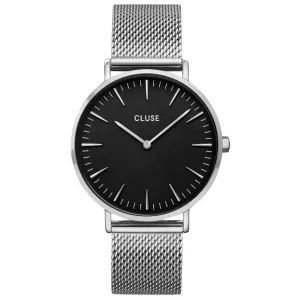Product Details
+It’s systematic, hydromatic, ultramatic—why it’s…
This watch, the Gyromatic by Girard-Perregaux.
Girard-Perregaux first applied the name “Gyromatic” to self-winding movements in 1957. These movements beat at the standard 18,000 bph (beats per hour). But as with anything, there was room for improvement, so in launching the Gyromatic line, that’s exactly what Girard-Perregaux set out to do.
While Girard-Perregaux’s first automatic watches used base movements made by A. Schild (and, later, Peseux), Girard-Perregaux was dissatisfied with their performance. So they developed a winding module, called the Gyromatic, which was then added to a blank manually-wound movement. The Gyromatic employed two “Gyrotron” wheels, which made the watch wind smoothly; additionally, each wheel had seven rubies on it to protect the movement from unnecessary wear.
Although Girard-Perregaux would go on to develop a hi-beat version of the Gyromatic in the 1960s, early Gyromatics like this one are still excellent examples of self-winding technology—which was still in its infancy at this point.
Indeed, horological historians view these early Gyromatic movements as some of the most important ever produced.
The one that we offer here in housed in a 35mm case. The dial features applied numerals and copper-toned syringe hands. Touches like the exotic font of the numerals (as well as the funky Gyromatic signature) make this watch as visually appealing as it is technically so.




